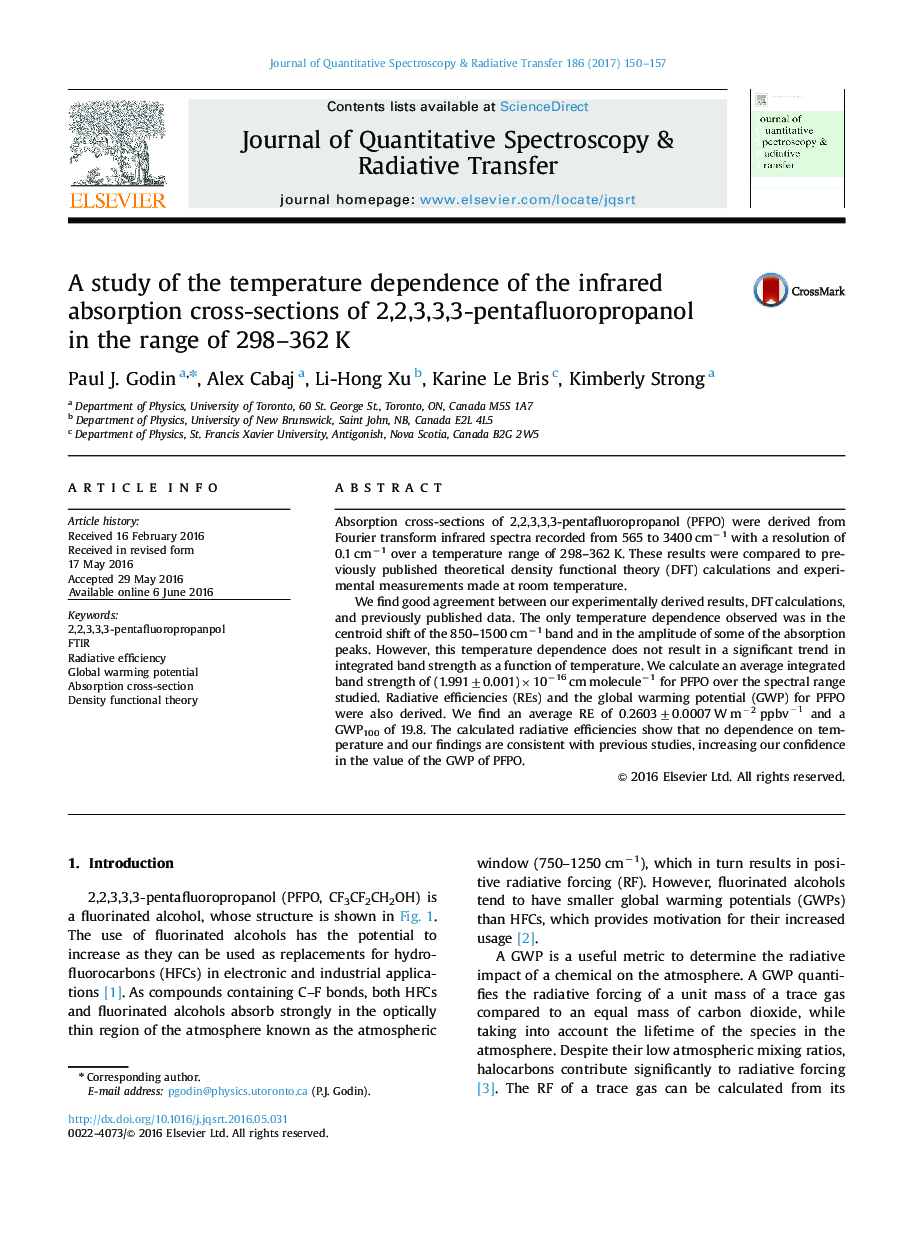| Article ID | Journal | Published Year | Pages | File Type |
|---|---|---|---|---|
| 5427493 | Journal of Quantitative Spectroscopy and Radiative Transfer | 2017 | 8 Pages |
â¢Cross-sections of 2,2,3,3,3-pentafluoropropanol (PFPO) were measured from 565-3400 cmâ1.â¢Good agreement between new results, prior data, and density functional theory.â¢Temperature dependence observed in centroid position of 850-1500 cmâ1 band and height of peak absorption.â¢No observed temperature dependence in the radiative efficiencies over the range of 298-362 K.â¢Global warming potential agrees with previous data and increases our confidence in these numbers.
Absorption cross-sections of 2,2,3,3,3-pentafluoropropanol (PFPO) were derived from Fourier transform infrared spectra recorded from 565 to 3400 cmâ1 with a resolution of 0.1 cmâ1 over a temperature range of 298-362 K. These results were compared to previously published theoretical density functional theory (DFT) calculations and experimental measurements made at room temperature.We find good agreement between our experimentally derived results, DFT calculations, and previously published data. The only temperature dependence observed was in the centroid shift of the 850-1500 cmâ1 band and in the amplitude of some of the absorption peaks. However, this temperature dependence does not result in a significant trend in integrated band strength as a function of temperature. We calculate an average integrated band strength of (1.991±0.001)Ã10â16 cm moleculeâ1 for PFPO over the spectral range studied. Radiative efficiencies (REs) and the global warming potential (GWP) for PFPO were also derived. We find an average RE of 0.2603±0.0007Wmâ2ppbvâ1 and a GWP100 of 19.8. The calculated radiative efficiencies show that no dependence on temperature and our findings are consistent with previous studies, increasing our confidence in the value of the GWP of PFPO.
